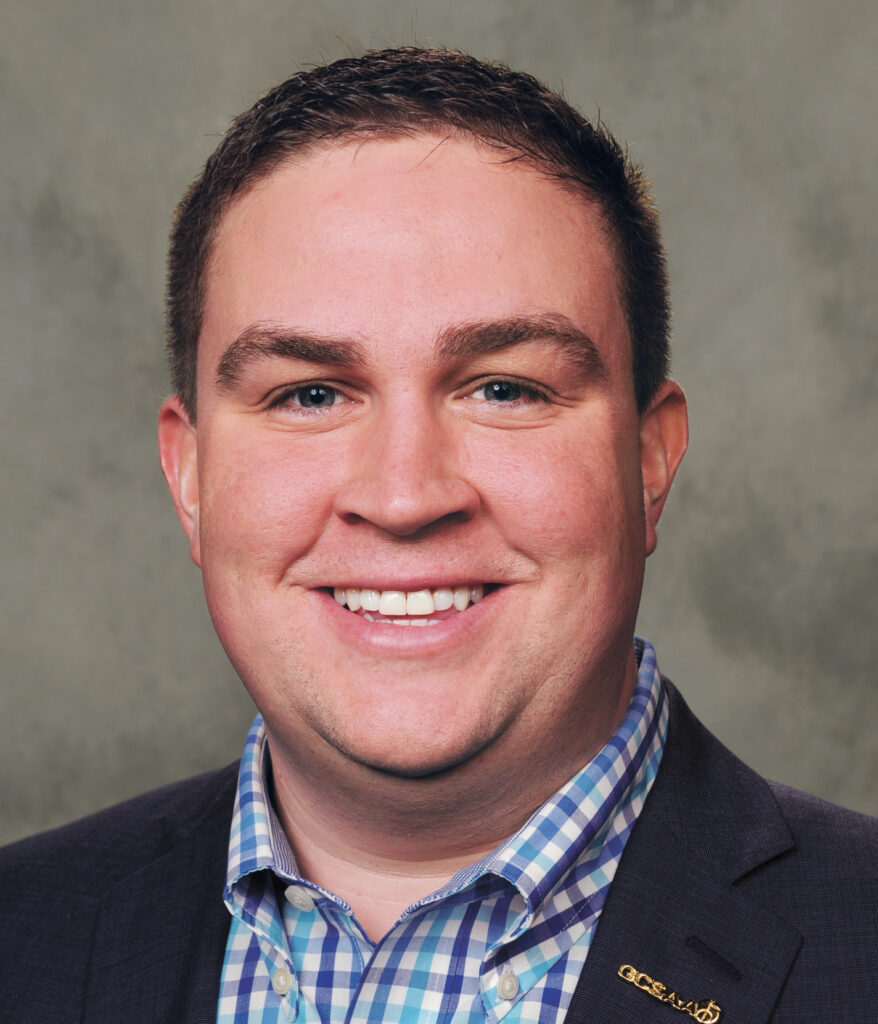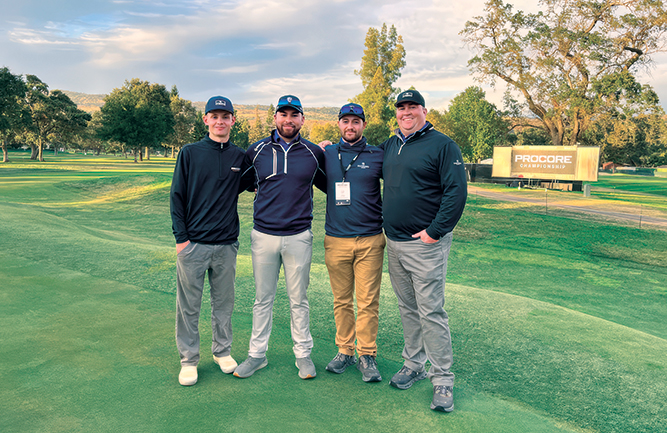Superintendents share their solutions to labor woes

You know the story by now: rounds are up and more people are playing golf than ever before. Golf is still in its post-COVID boom period. Look at the National Golf Foundation’s 2025 Graffis Report — named after Golfdom founder Herb Graffis — which shows that 28.1 million people participated in “green-grass golf” in 2024, the highest number since 2008 and the seventh straight annual increase.
Unfortunately, the game’s growing popularity hasn’t created an increased interest in working on golf courses. In the 2022 Capital and Labor Survey conducted by the Golf Course Superintendents Association of America, 63 percent of superintendents described the labor market as bad or very bad.
To get deeper insight into this ongoing labor shortage, Golfdom spoke with several superintendents and a superintendent-turned-consultant to gather ideas on how to fill the labor gap and grow the next generation of golf course agronomists.
Where are the workers?
Tyler Bloom recently debuted a new name and expanded vision for Bloom Golf Partners, his executive search and business consulting firm specializing in the golf and private club industries.
Bloom founded the business, formerly Tyler Bloom Consulting, in 2020. Since then, it has helped to place more than three dozen directors of agronomy and golf course superintendents and more than 300 professionals, including equipment managers and assistant superintendents.
Bloom is a former superintendent himself, most recently spending time at Sparrows Point Country Club in Baltimore before founding his consulting firm. In 2024, Bloom, in partnership with the Center for Generational Kinetics, an independent research firm, and commissioned the Workforce Trends in Golf National Research Study, aimed at revealing, debunking and uncovering myths and truths about the current trends, perceptions and practices of working at a golf course and private club.
The study was eye-opening for Bloom, confirming many of the ideas and strategies he’s used to help clubs nationwide.
“I would recommend strategies to clubs, but not everybody’s going to be cohesive with that sort of recommendation. So, I thought, ‘Well, let’s do some research so I know that the insights I’m giving are driven by fact,’” he says of the study.
One of the several topics the study tackles is the ever-present question on a superintendent’s mind: Where are all the workers?
The answer according to Bloom’s study? Only 38 percent of Americans view golf courses as a strong career path. So, how does Bloom suggest golf courses and superintendents boost that? To start, he says the superintendent has to be their biggest brand ambassador.
“The club and the super have to take action. (As a superintendent) I didn’t have an issue recruiting people because I took action. If you’re posting (the job) and praying for something to happen, you will always be in this state of flux,” Bloom says. “To me, it has to be boots on the ground. You’ve got to go actively engage and recruit people. You can’t wait around anymore because they don’t know.”
That could be by using things like videos and other content on social media to raise awareness. Bloom also notes that the GCSAA and its First Green program are ways to promote the industry and the opportunities it offers in your area — albeit to a younger audience.
“I see too many people using the labor market as, and I hate to use the word, but an excuse. They’re not putting forth any actions to be creative or flexible,” Bloom says. “They need to communicate. If they are running into issues, then they need help readjusting expectations.”
Wages, wages, wages
Usually, getting someone in the door — if they’re unfamiliar with the world of golf course maintenance — starts with paying a competitive wage.
Bloom’s study shows that one in two Americans view working at a golf course positively, but still carry negative associations to employment, such as temporary or seasonal, long hours and high stress.
“If you’re not paying people a marketable, competitive wage and benefits and creating a great workplace culture that people want to come to and stay at, then it doesn’t matter what you do,” he says.
The study found a pretty specific number at which worker retention reaches roughly 90 percent.
“I think you’ve got to pay people north of $70,000, or they’re not going to stick around. They’ll go find another job,” Bloom says. “Ironically, our cut-off for any sort of recruiting project has a base salary of 70,000, so I found it fascinating that that data coincides with what we’re seeing.”
Creating culture
Salary is important — and Bloom’s study confirms that, showing 77 percent of working Americans would consider a job change with a 10 percent increase from their current salary. However, Bloom believes that when it comes down to retention, ultimately, it’s the culture that will cause someone to stay or leave.
“Yes, salary is important, but sometimes people leave and make lateral moves because they’re down (mentally),” he says. “If they’re not in an environment that can nurture them to the next step, and you don’t have a good workplace culture and a leader who takes action, that’s probably the driving force of why people leave jobs at all levels.”

Noah Tubbs, superintendent at Glens Falls Country Club in Queensbury, N.Y., knows what it’s like to come into a club with a culture built to nurture and grow its employees. Tubbs interned at Glens Falls while in college at SUNY Delhi and later served as an assistant superintendent at the club before becoming the man in charge.
“My old boss, Chris Frielinghaus, helped shape me as an assistant and intern. As an intern, I remember going to green committee meetings,” Tubbs says. “That is not something I or any of my other college buddies ever did.
“I remember the chair coming up to me while I was mowing fairways. It was a Wednesday morning, and he says, ‘Noah, can you do a presentation for tonight’s greens committee meeting?’ and I’m like, ‘Tonight?’ It’s 8 o’clock in the morning, and the meetings at 5. He’s like, ‘Yeah, tell Chris I told you to go home early so you could work on a presentation if you needed.’”
Tubbs says that having opportunities like that as an intern showed him how to manage that aspect of the job. It also helped him go into future meetings as an assistant and then as a superintendent knowing how to handle that.

77 percent of Americans don’t know they can earn more than $100K a year working on a golf course, according to Tyler Bloom. (Photo: Golfdom staff)
For Bloom, managers of clubs who don’t think making that investment — like the one that Frielinghaus made in a young Noah Tubbs — are setting themselves up for failure.
“People want to be a part of a mentorship culture,” Bloom says. “They want to come into a place where somebody will take them and guide them on the next step, whether that’s skill development, responsibilities of higher titles or salary increases.”
Promoting from within
Tubbs has a pair of assistants on his staff, and both were promoted from within — one before he took over as superintendent and the other that Tubbs himself hired. Tubbs’ current crew consists of himself, a mechanic, two assistants, two full-time laborers and up to 15 seasonal workers.
Tubbs says there are quite a few things he looks for in a staff member that might translate into a potential assistant or full-time laborer, including whether or not they show up on time. But also, he says they have to show a genuine interest in the why of what they’re doing on the course.
Sometimes, he adds, that might be easy to miss, especially during the busy season when projects take priority.
“I think we as superintendents get so focused on, ‘Oh, we just have to get this job done,’ that we forget that every moment out there is a teaching moment,” he says. “If you’ve got someone on staff asking a question, don’t just say, ‘Oh, I don’t have time for that.’ Take the time to give them the full answer. The two-and-a-half minutes you might spend explaining to them isn’t costing you anything over your day.
“We can all attest that we probably waste more time fiddling with our phones than we do taking that extra two minutes to talk about a problem or explain why you want it done this way. If they’re asking questions, there’s an interest, and you have to cultivate it.”
Tubbs’ second assistant, Logan Dexter, was one of those employees who showed interest in the why. Tubbs says Dexter was always asking questions about the club’s irrigation system, which led him to offer up an opportunity to learn.
“You have to give them a little bit of wiggle room. Ask, ‘Do you think you can handle it on your own?’” he says. “I think it’s more or less about being able to identify the talent that you have within your department, which isn’t always easy, but if you can identify the talent, see if they’re coachable and then help educate them. It’s only going to help them in the future, and it’s only going to help you in the future as well.”
Keeping your employees
Once you’ve identified and successfully trained a new assistant, you’ve got to keep them on staff for as long as you can until they’re ready to take on a head position elsewhere (if that’s their goal).

David Walter, director of agronomy at Silverado Resort in Napa, Calif., knows what it’s like to cycle through assistant superintendents. Nestled in the Napa Valley about an hour north of San Francisco, the area surrounding Silverado is what Walter calls a “dream location” for some.
But for others, like the demographic most likely to be an assistant superintendent, it can be a challenging place to live.
“It’s a super difficult place to convince young people to move to. The population is on the older side, so there’s not a lot of nightlife,” Walter says. “You’re stuck in the valley, and to get out and explore, you have to go to San Francisco, which can be a two-hour drive pretty easily with traffic.”
To land assistants, Walter adds that he has to be creative and understands that the course might be a stepping-stone job for most applicants.
“I have a conversation and let them know that if they’re willing to make it work here for the learning opportunities here for three or four years, we’ll do everything we can to help you find what’s next for you,” he says.
Silverado hosts a yearly PGA Tour event — the Procore Championship, formerly the Fortinet Championship — which gives Walter a chance to get creative with both helping his assistants get more experience and also finding potential future employees.
“We require our leaders to go volunteer for at least one other tournament. So, Jeremy (Turner-Sanchez), our North Course superintendent, went with me to Kapalua to volunteer for The Sentry this year. And then Jose (Tena Jr.) is going to be going to The Truist Championship at Philly Cricket,” Walter says.

While volunteering at the tournament, Walter gives his assistants homework. They have to talk with the mechanic and all of the assistants to get all they can out of the experience. It also works as a recruitment tool for Silverado, as Walter says.
“Is there an assistant-in-training on that staff looking for a change or next step? Being at these tournaments is a way to meet these people, and you never know whether they want to come here or a fellow Troon property,” he says.
That has helped, according to Walter, as he’s been able to help former assistants land new gigs and also drum up interest in Silverado at the same time. Still, the location and other factors have made filling out his team a bit of a struggle, meaning Walter has had to make do with the resources he has available.
“It’s not quite a needle in a haystack, but it’s close,” he says. “But, I would rather have no one than the wrong person. So, if it means that it’s a little more difficult to operate because we’re short a person, it’s better than someone that’s not holding up their end of the bargain.”
Related Articles
A closer look at the 2025 Graffis Report
Keeping up with the Jones: Hanging with the YouTubers and TikTokers












